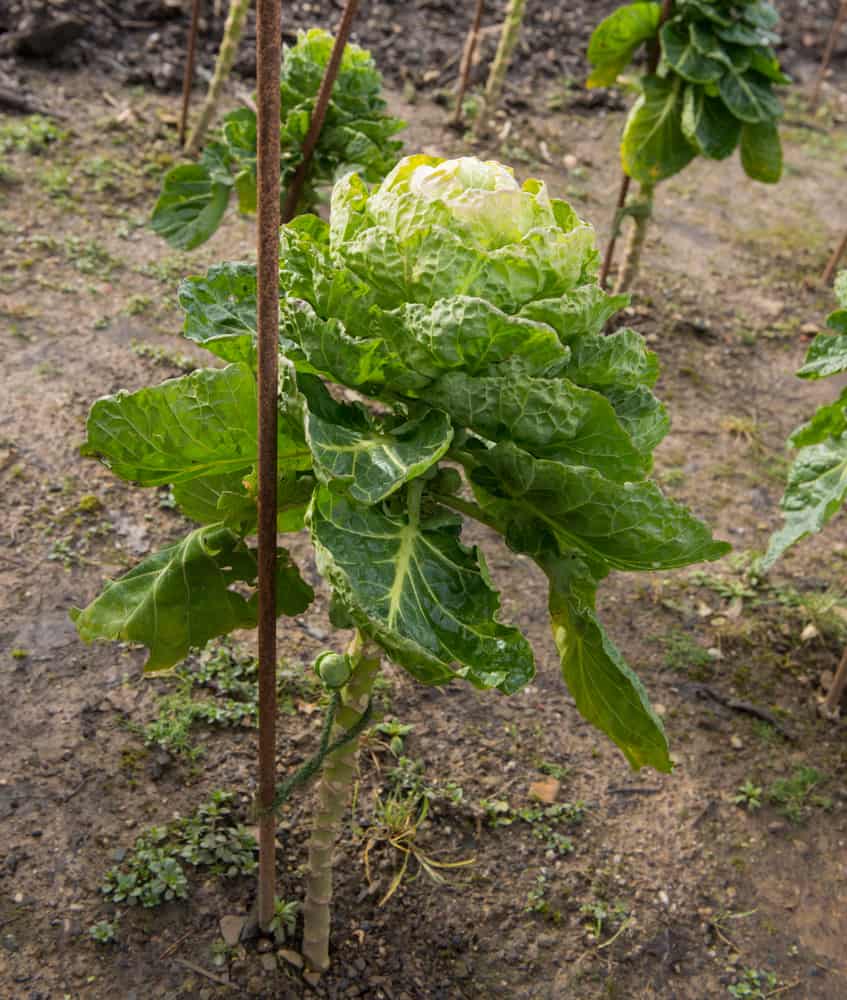
No one seems to know where Brussels sprouts originated but it is assumed they came from Belgium where Brussels is the capital city. Selection & Storageīrussels sprouts, what an odd name for a vegetable that has the appearance of a "cute little baby" cabbage. The newer, faster-maturing varieties are generally more suitable for getting dependable yields. In addition, check the variety you have planted. This practice stops leaf growth and directs the plant's energy to the developing sprouts. You also can cut off the top growing point when the plant reaches 24 to 36 inches in height. Use transplants for early plantings and maintain ample soil moisture. When the sprouts develop in hot weather (after spring seeding or during a warm fall), they often do not form compact heads. Why do my sprouts remain loose tufts of leaves instead of developing into firm heads?Ī. Common ProblemsĪphids, cabbage worms and diseases. Harvest sprouts before the leaves yellow. The lowermost leaves, if they have not been removed already, should be removed when the sprouts are harvested. They may be picked (or cut) off the stem when they are firm and about one inch in size. The small sprouts or buds form heads one to two inches in diameter. About 3 weeks before harvest, the plants may be topped (the growing point removed) to speed the completion of sprout development on the lower-stem area. Two or three additional leaves can be removed each week, but several of the largest, healthiest, fully expanded upper leaves should always be left intact on top to continue feeding the plant. Some gardeners believe that the sprouts develop better if the lowermost six to eight leaves are removed from the sides of the stalk as the sprouts develop. The sprouts form in the axils of the leaves (the space between the base of the leaf and the stem above it).Ĭommercial gardeners remove the leaves to accelerate harvest, but this practice is not essential in the home garden. Cultivate shallowly around the plants to prevent root damage. Insect control is also very important at this stage to keep the plants growing vigorously. Without ample soil moisture, the crop fails. Apply one side-dress application of nitrogen fertilizer when the plants are 12 inches tall and water to keep the crop growing vigorously during the heat of summer. Careīrussels sprouts are grown much like the related cole crops, cabbage and broccoli.

Do not allow transplants to become stunted in the flats before transplanting. Cover seeds 1/4 to 1/2 inch deep and transplant the seedlings when they are about 3 inches tall. Space plants 24 to 36 inches apart in the row, or 24 inches in all directions in beds. Fall production is the most practical and rewarding in most parts of the country. Sprouts maturing in hot weather or under dry conditions are more likely to develop bitterness. For summer harvest, you must plant transplants of an early, heat-resistant variety in very early spring. Transplant the seedlings to the permanent garden location when space and time allow but at least 90 to 100 days before the first frost date for your area. The seed should be sown in a protected location in seed flats, 4 to 5 weeks before transplanting. Transplant in early summer to midsummer about the same time that you would plant late, long-season cabbage. Rubine (105 days red plants and sprouts novel, but very late maturing, not nearly as productive as recommended hybrid green types). Long Island Improves (90 days variable, harder to produce heavy, uniform crop with this variety) Valiant (90 days smooth, uniform sprouts) Royal Marvel (85 days tolerant to bottom rot and tipburn tight sprouts very productive)

Prince Marvel (90 days tight sweet sprouts) Oliver (85 days early easy-to-pick, attractive sprouts) Jade Cross E (90 days sprouts larger, easier to remove from stalk than with original strain) Jade Cross (90 days, resistant to yellows) Recommended Varietiesīubbles (82 days to harvest, dependable, tolerates warm weather, resistant to rust) Plants set out in late spring to early summer grow satisfactorily and mature high-quality sprouts when the fall weather begins to cool. In all but the most northern states, summers are usually too warm for completely satisfactory production from spring plantings. Brussels sprouts require a long growing period, though newer hybrids have greatly reduced this requirement. Sprouts improve in quality and grow best during cool or even lightly frosty weather. The "sprouts" (small heads that resemble miniature cabbages) are produced in the leaf axils, starting at the base of the stem and working upward. In mild areas, or where there is deep snow cover, the sprouts may overwinter. In the proper season of the year, it can be grown with fair success in most areas of the country. Brussels sprouts, is a hardy, slow-growing, long-season vegetable belonging to the cabbage family.


 0 kommentar(er)
0 kommentar(er)
